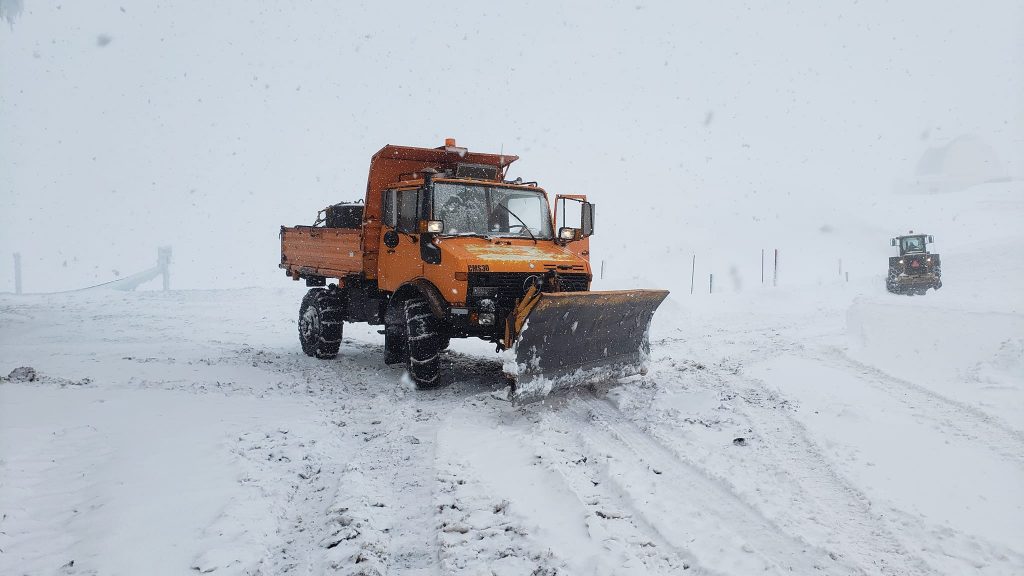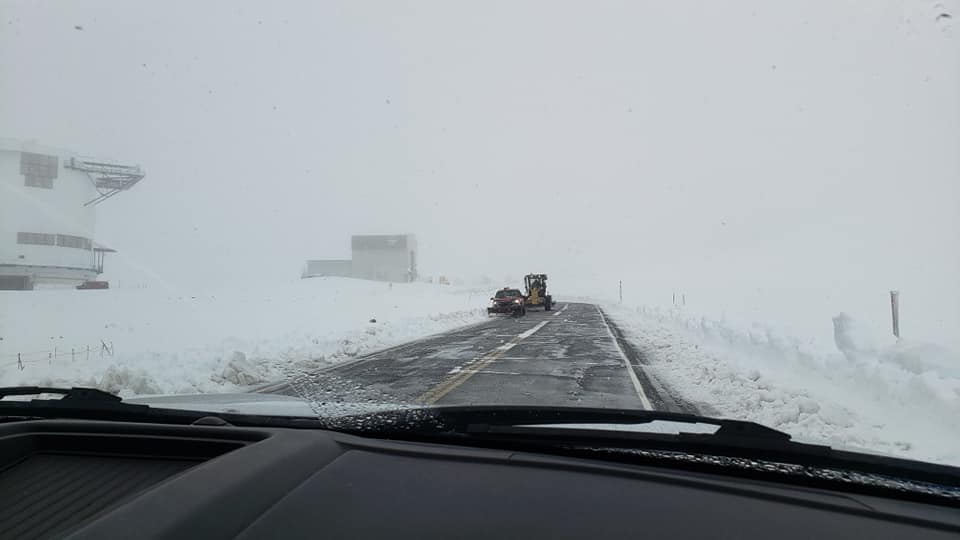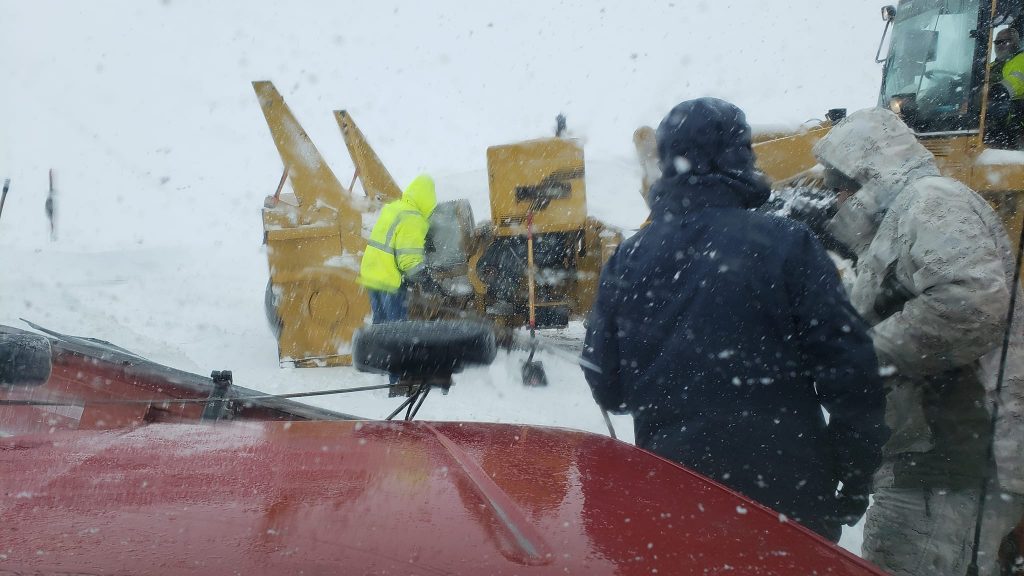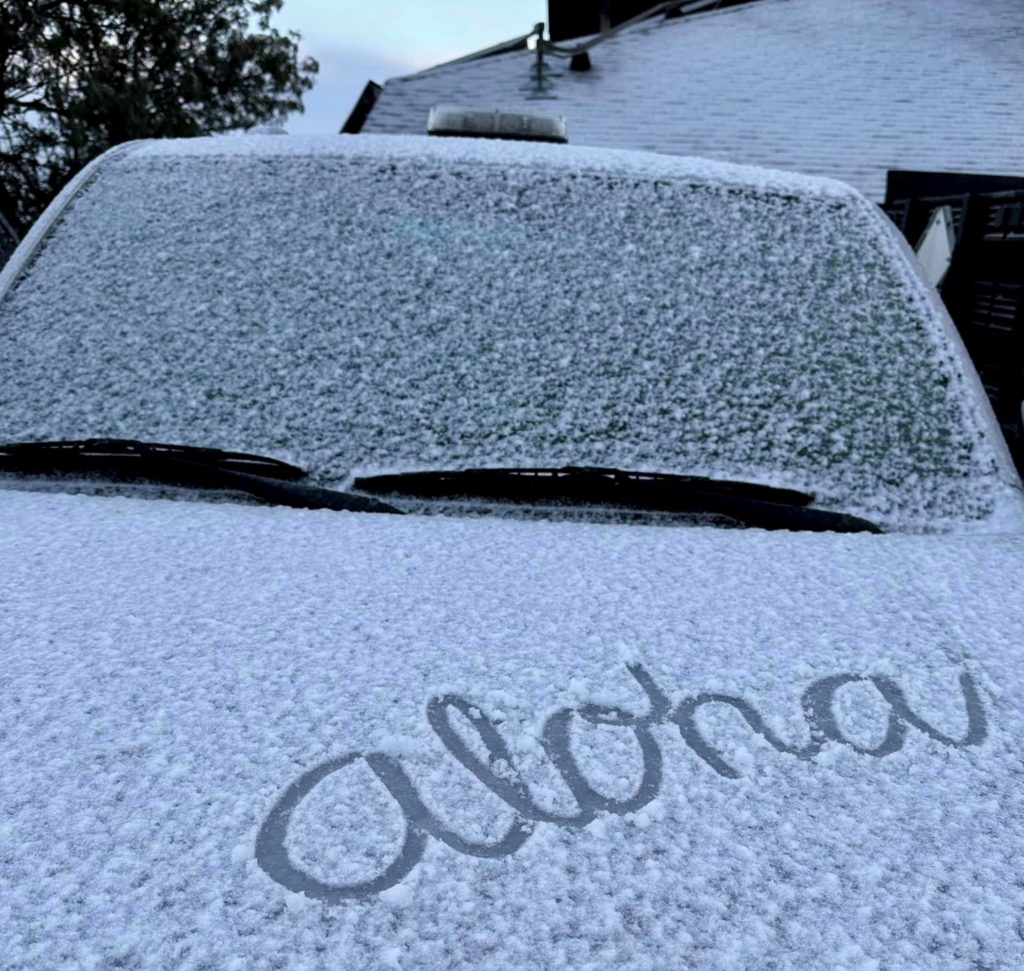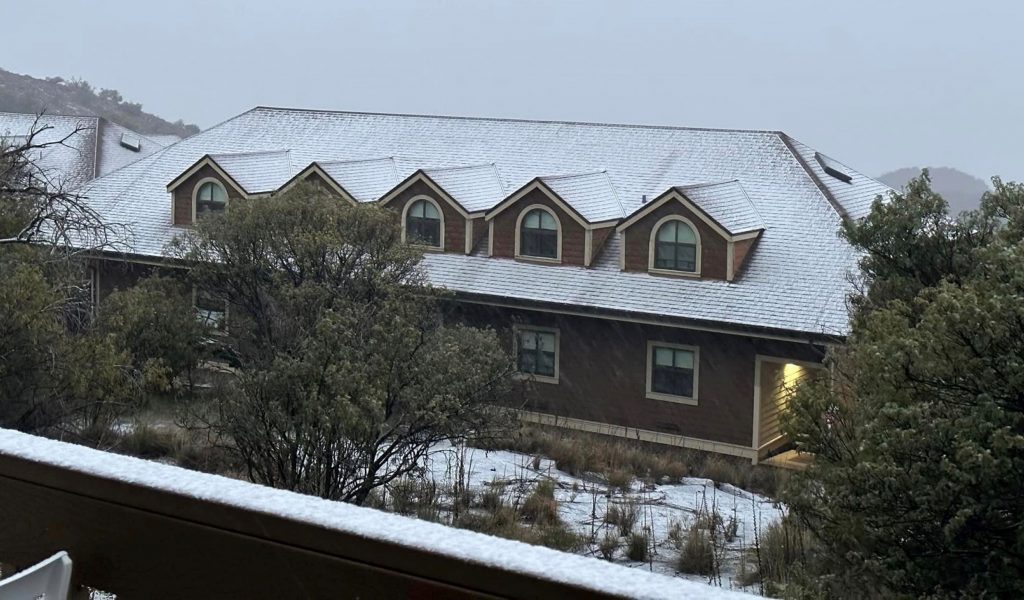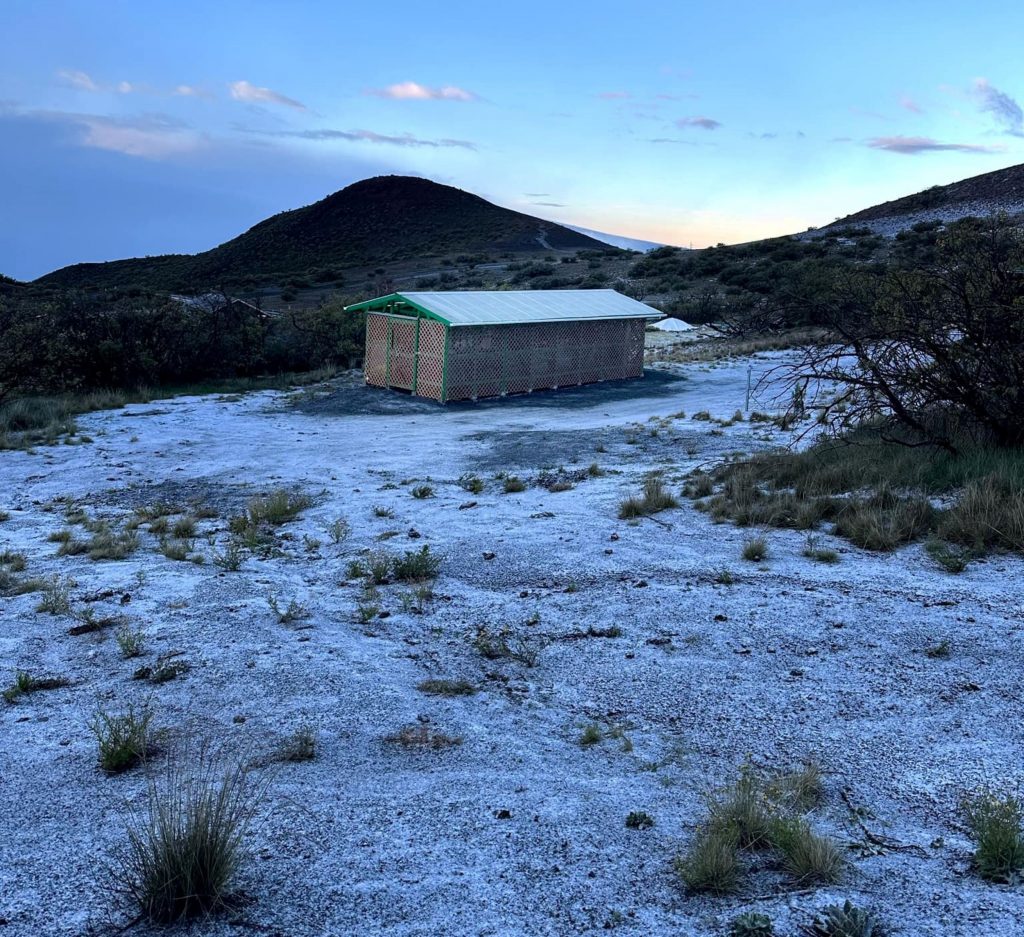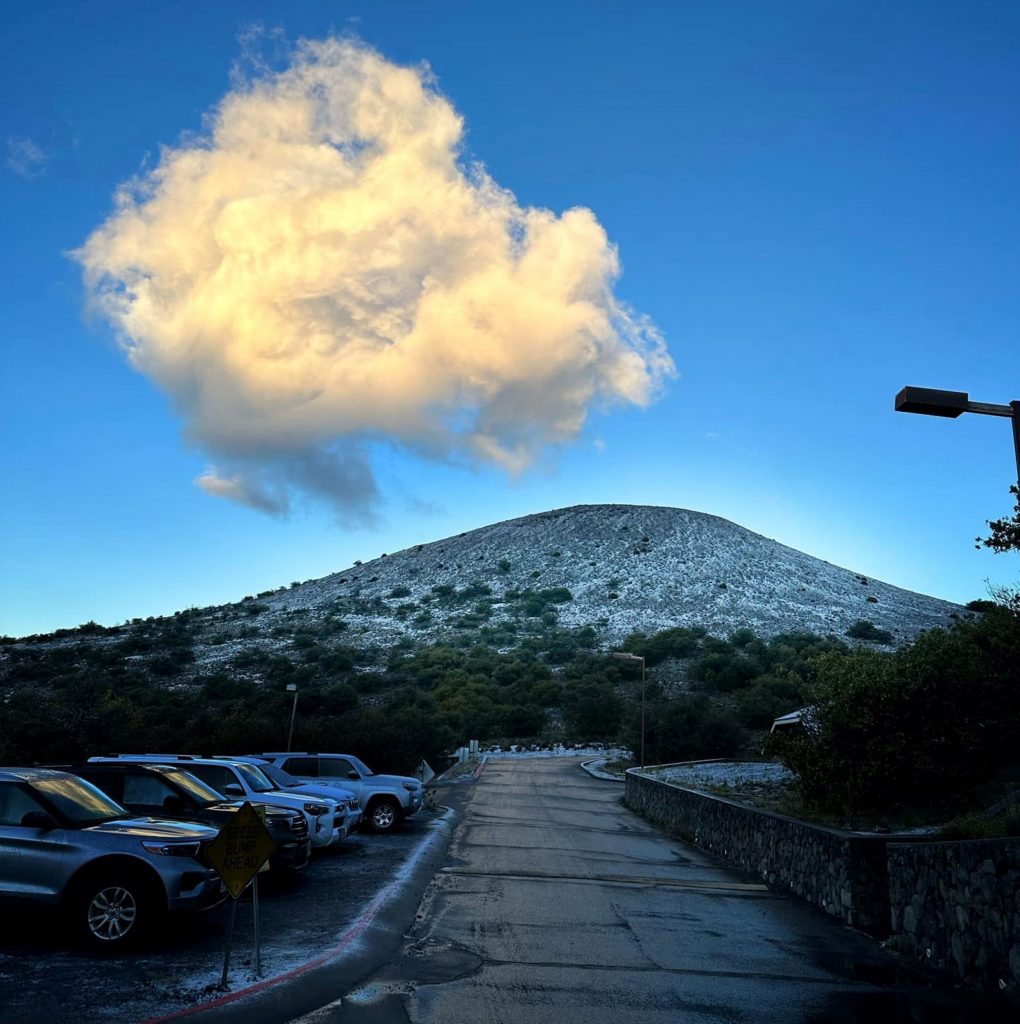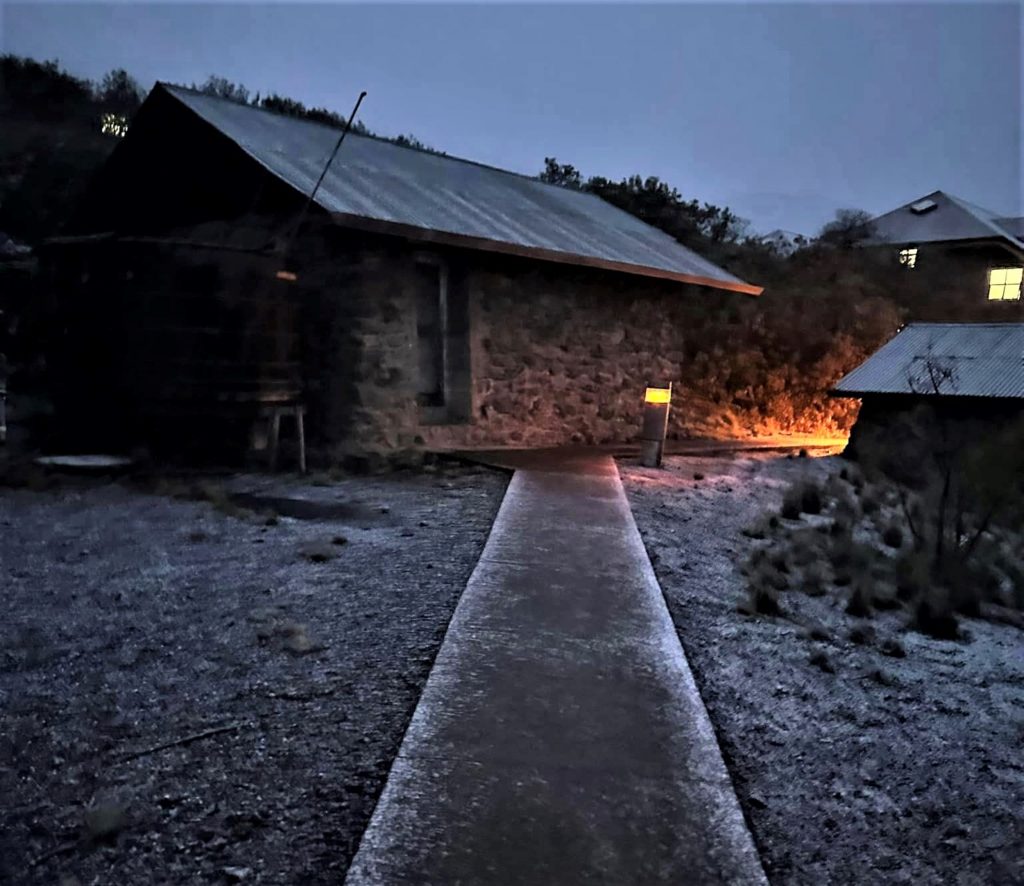Snow keeps falling at Big Island summits; even at Maunakea Visitor Information Station
Dennis Patterson’s job at the W.M. Keck Observatory atop 13,803-foot Maunakea primarily focuses on caring for and maintaining the observatory’s cameras and spectrometers. But the recent winter weather has given him another purpose during his four days a week at the summit: shoveling snow.
The Big Island was drenched with rain by two Kona Lows in the middle of February. But at the high elevations, the storms also produced more than a foot of snow, including 10-foot drifts in some places on Maunakea.
“I was still shoveling up there Saturday,” said Patterson, who is used to the white stuff having lived in Colorado and Utah. “This last storm was pretty epic. We still haven’t been able to open the domes for the last 12 or 13 nights due to ice and snow buildup.”
While the “old-timers” have told Patterson they’ve seen bigger storms, the recent ones are up there.
At sea level on the Big Island, one person in East Hawai‘i on Wednesday wondered if anyone had Noah’s phone number so they could ask if there’s room left on the ark as rain continued to drench parts of the Big Island.

But those who work at the frigid summit of Maunakea — the temperature was just 24 degrees shortly after 7 p.m. on Wednesday — faced yet another round of snow and ice.
The summits are under a winter weather advisory until 6 p.m. on Thursday, with the National Weather Service forecasting additional accumulations of up to 4 inches on the summits along with freezing rain. Blowing snow also will reduce visibility, at times to zero.
The cold core of a rather strong low-pressure system just east of the state is causing the snowy weather. It is even pushing the freezing level down in elevation, far enough so the Onizuka Center for International Astronomy, also known as Hale Pohakū, and the Maunakea Visitor Information Station at between 9,200 and 9,300 feet in elevation even got a rare dusting of snow on Tuesday.
“Over the past few days we have had a good amount of rain coming into Hilo and combined with the cold temperatures from the recent cold front, we got a beautiful dusting of snow this morning,” said Nahua Guilloz, director of stewardship programs at the University of Hawai‘i at Hilo Center for Maunakea Stewardship that oversees the facilities.
The last time it snowed there was in February 2020.
Keith Kefford, who works at the Visitor Information Station, posted pictures of the snow in the Hawai‘i Tracker group on Facebook, one of which showed a message of “aloha” written in the fresh dusting on top of a vehicle’s hood.
“Wow,” commented Christina Minthorn. “My whole life being here I never remember it coming down that low.”
“Yeah, it’s pretty rare you get snow this low,” Kefford said in reply. “Even the old-timers were tripping out!”
Cindy Loomis said snow just isn’t what she pictures when she thinks of Hawai‘i.
“Right?!” Kefford replied. “All our visitors up here today were from Canada, Colorado, Minnesota … snow bunnies all!”

It’s rare, sure, but not unprecedented to get snow at that low of an elevation and even sometimes lower. Kefford added that there are photos from the 1930s “showing LOTS of snow” at the same elevation as the Visitor Information Station. Others commented they had seen snow below the visitor information center and even on Saddle Road at just more than 6,600 feet.
Another commenter said they saw snow fall about 40 years ago in Volcano Village in Puna, which is at just 3,750 feet in elevation.
“Didn’t stick on the ground, but it was snowing,” Barry Williamson said.
That’s the same with most snow that falls below about 10,000 feet on the island. It melts quickly at lower elevations and normally stays on the ground for just a few days at the summits.
The low-pressure system’s chilly nature had already pushed the freezing level down to about 10,600 feet by Wednesday afternoon, according to the National Weather Service, with a further drop expected overnight, so there could be another dusting in store for slightly lower elevations on Thursday morning.
You can check the weather conditions at the summit and forecasts by visiting the Maunakea Weather Center online.
At the lower elevations, the rain keeps coming, and looks to continue for at least the next couple of days, plus it’s been chilly in much of the eastern half of the island lately — temperatures have barely reached out of the 60s sometimes, even in the afternoon.
But the next time you get a cold shiver in Hilo, Pāhoa, Mountain View, Honoka‘a, Waimea, Pāhala or anywhere in between, think about people like Patterson who are still digging out from the snow several thousand feet up.
“I left Phoenix last year to work in the snow in Hawai‘i … lol,” he joked. “Ironic.”




